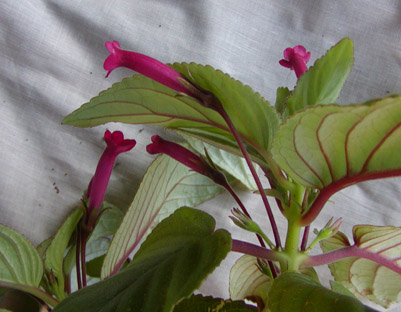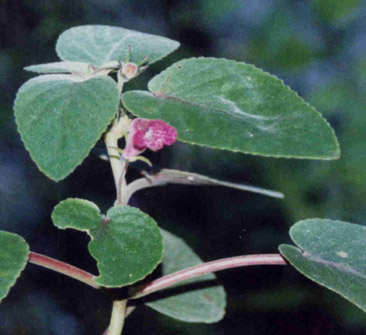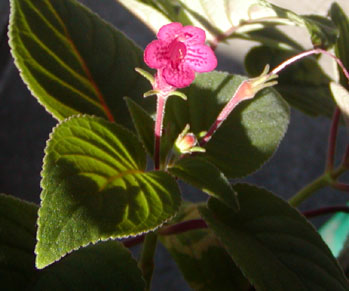Sinningia sp. "Black Hill"
Sinningia sp. "Black Hill" was grown from seed collected near Morro Preto in Brazil (Morro Preto means "black hill" in Portuguese). At first it was believed to be a variety of S. reitzii. When the differences were recognized, it was given the holding name of S. aff. reitzii. I use the name "Black Hill" to avoid prejudging its relationships and to avoid confusing this plant with the real S. reitzii (the "aff." often gets dropped on plant labels).

This may or may not be a new species. It shares many properties with S. reitzii, and differs from that species in a few important respects. All the same, it is worth having a name to describe this population of individuals, which differs in predictable ways from the standard population of S. reitzii.
Note the pedicel for the flower at top center. A second flowerbud also emerges from the same axil. Both pedicels originate in the axil. There is no peduncle (or at most an extremely short one). Sinningia reitzii has multiple flowers per axil, with an inflorescence that starts with a peduncle usually at least an inch [2.5 cm] long.

